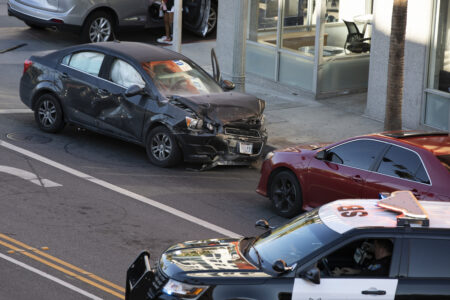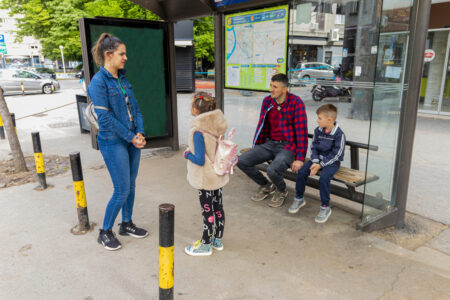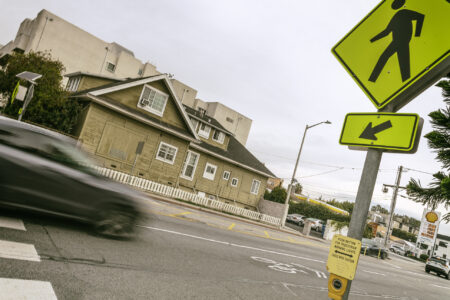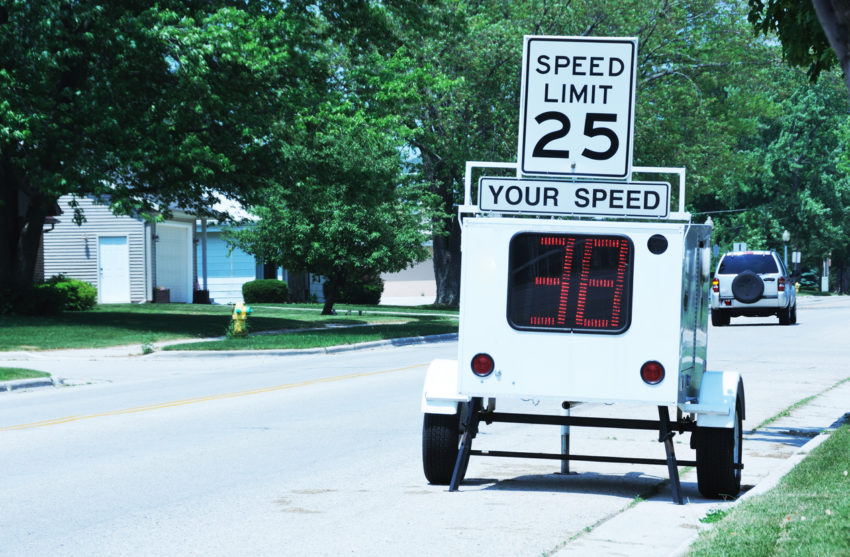
Share On Social!
American cities are failing at traffic safety—largely due to unsafe speeds.
Urban arterials—roads that link major activity centers and highways—accounted for 29% of all U.S. fatal crashes between 2014 and 2018, despite making up only 6% of roadways.
That’s why the National Association of City Transportation Officials (NACTO) developed City Limits, a framework for setting safe speed limits for city streets and providing strategies to manage speed.
“Most speeds limits are set using an oversimplified and outdated method: measure 100 drivers traveling without any traffic and set the speed limit based on the 15th-fastest driver,” said Jenny O’Connell, NACTO Program Manager, according to a NACTO press release.
“If this sounds like a system that would create dangerous outcomes, that’s because it does. Even worse, in many cases, speeds ramp up over time as drivers respond to speed limit signs and speed a few miles per hour over the posted limit, creating a negative feedback loop of faster, less safe streets.”
Speeding Traffic Is a Big Problem in Cities
Drivers traveling at higher speeds have a narrower field of vision. They also travel further before they can react and have longer braking distance.
Moreover, crashes at higher speeds are more forceful, thus more deadly, particularly crashes involving larger vehicles that are heavier and taller. Pedestrians are two to three times more likely to die when hit by an SUV or pickup than by a passenger car.
This is a big problem in cities. This problem is worse for Latinos and other people of color who are more likely to live in neighborhoods with bad street design, inadequate transit, and higher risk of getting hit and killed while walking.
Urban arterials are especially dangerous for people biking or walking. For example, although urban arterials only make up 6% of US roadways, they account for 49% of all fatal crashes involving people biking or walking.
Find out where the 100 most dangerous congressional districts for people walking are here.
Speeding drivers also remain a problem during COVID-19, where experts have found that, although traffic is down, crashes are more deadly.
Slowing Down Traffic Can Help, But It Isn’t Easy to Do
Small reductions in speed can greatly improve safety on city streets. The Highway Safety Manual reports that a 1 mph reduction in operating speeds can result in a 17% decrease in fatal crashes.
This is especially important for Latino health.
However, the current percentile-based methods used to set speed limits on city streets are based on 1940s research conducted on two-lane rural highways.
The 85th percentile method instructs engineers to raise the speed limit in 5 mph increments when more than 15% of drivers are driving faster than the posted speed limit.
Using percentiles to determine speed limits results in increased speeds over time.
Unfortunately, authority over these methods is often at the state level rather than the city level.
In NACTO’s report, City Limits, their combined three-method approach aims to bring driver behavior in line with the law and safety goals, particularly in cities.
“Traditional transportation design has focused on designing streets and roadways for speeds that are generally inappropriate, especially in an urban context, contributing to unnecessary loss of life and serious injuries,” said Billy Hattaway, Orlando’s transportation director, according to a NACTO press release. “Practitioners need guidance on reducing posted speeds and managing speed to improve safety for all users, especially vulnerable users such as pedestrians and bicyclists. This is an essential guide to support that goal.”
1. Setting Default Speed Limits
In some places, statewide speed limit setting requirements are determined by state departments of transportation or state legislation, thus cities have limited authority. These cities should seek a written change in practice and request that some streets be exempt from the 85th percentile requirement.
“A growing group of US states have passed legislation granting cities the flexibility to set safety speed limits,” according to the report.
In other places, state law already grants cities authority to set speed limits
If cities have the authority to set default speed limits, they have two options: citywide or by street category.
Setting or lowering default citywide speed limits is an inexpensive and scalable way to provide consistent expectations and to quickly improve safety outcomes.
However, it may not be as politically feasible as setting speed limits by category.
Setting or lowering category speed limits allow cities to set a small number of speed limits that apply to specific categories of streets based on broad classes, such as major streets, minor streets, and alleys, according to the City Limits report.
Shared streets and alleys are where people are expected to walk in front of or against oncoming motor vehicles, where walking, playing, or public space activities are expected in the roadway, as well as dead ends, laneways, and some service/parking/access roads along multiway boulevards.
The maximum recommended speed limit for any shared street or alley is 10 mph, according to NACTO.
Minor streets are often categorized by:
- A single moving vehicle lane (one- or two-way)
- Two moving vehicles lanes but fewer than 6,000 vehicles per day
- Intersections are stop signs or yield signs
- Yield streets, neighborhood streets, some residential boulevards, one-lane downtown one-way and two-lane downtown two-way streets
The maximum recommended speed limit for any minor street is 20 mph, according to NACTO.
Major streets are often characterized by:
- Moderate to high motor vehicle volumes
- Signalized intersections
- Frequent transit stops
- Multi-lane downtown one-way and downtown two-way streets
- Many neighborhood streets, multi-way boulevards, and transit boulevards
The maximum recommended speed limit for any major street is 25 mph, according to NACTO.
2. Designating Slow Zones
Lowering speed limits in neighborhood-specific or site-specific zones can help cities address particularly dangerous areas with high crash rates as well as vulnerable areas with a high concentration of people, like neighborhood downtowns and areas around schools and parks, according to the City Limits report.
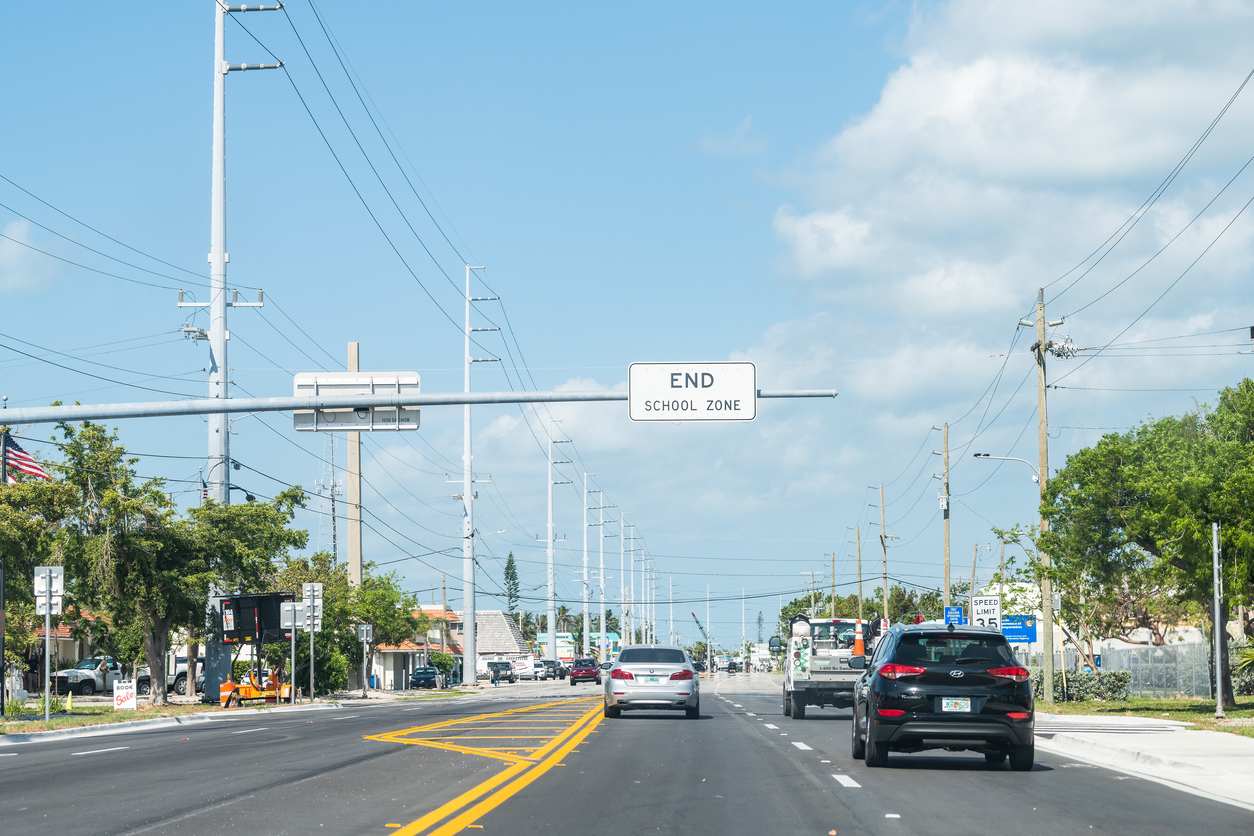 The maximum recommended speed limit for neighborhood and downtown slow zones is 20 mph, according to NACTO. It could be lower for school, park, and senior area slow zones.
The maximum recommended speed limit for neighborhood and downtown slow zones is 20 mph, according to NACTO. It could be lower for school, park, and senior area slow zones.
For example, a 15 mph time-of-day speed limit can be used near a school on a major street that would otherwise have default speed limit of 25 mph.
3. Setting Corridor Speed Limits
In some areas and on certain types of streets, cities may not be allowed to lower speeds without conducting a speed study.
Rather than a percentile-based speed study, “Safe Speed Studies” should be used, according to the City Limits report.
The four main components of a Safe Speed Study include: collecting data, analyzing existing conditions, determining how to manage speeds down, and evaluating changes.
Safe Speed Studies analyze activity level, conflict density, and other contextual factors to determine the speed limit that minimizes serious injuries and deaths.
Conflicts are where two vehicles or a vehicle and person could potentially collide, often when pulling on, pulling off, or crossing a travel lane(s), without sudden, evasive action to prevent a crash.
Activity levels are based on existing or expected pedestrian activity, bike traffic, use of public spaces, frequency of driveways, density of transit stops, and demand for curbside parking/loading.
“In general, high conflict, high activity streets will require lower speed limits since the risk of a crash is high, while somewhat higher speeds can be tolerated on low conflict, low activity streets,” the report states.
Tools to Manage Speed on Roads
Cities can combine these three speed management strategies to improve safety and better align design speed, target speed, and the speed limit. Keep in mind, some cities may need to seek state-level legislative permission.
Once speed limits have been lowered, there are various tools for speed management. These include signs and markings, design and operations, automated speed enforcement, and messaging and education.
Law enforcement is often the first tool people think of to manage speeding drivers.
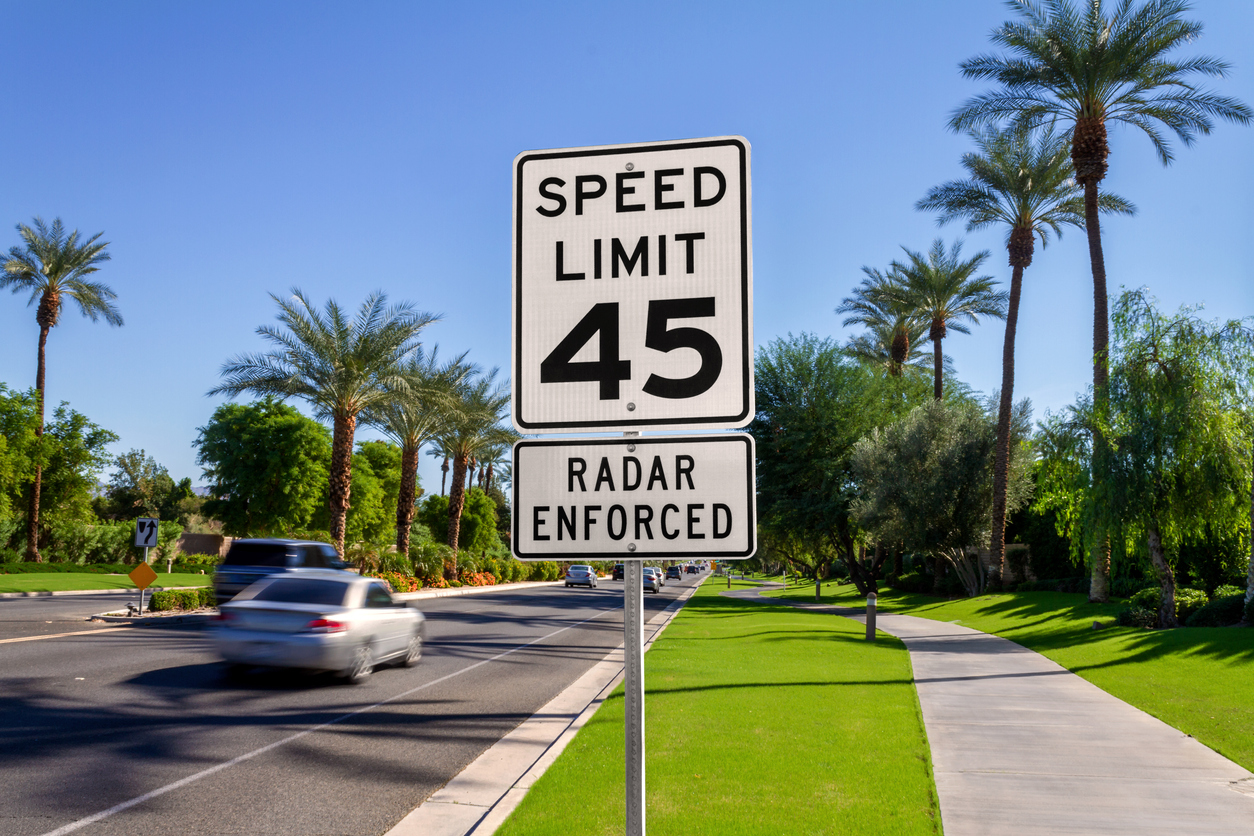 However, racial profiling by law enforcement threatens drivers, pedestrians, and cyclists of color.
However, racial profiling by law enforcement threatens drivers, pedestrians, and cyclists of color.
“There are better ways to promote safety in our public space than today’s police system,” according to a June 2020 press release from Vision Zero, a nationally recognized traffic safety advocacy group.
That’s why many cities have reconsidered the role law enforcement plays in street safety and increased emphasis on automated speed enforcement cameras while moving traffic enforcement out police departments and into other agencies.
“Studies find that [automated speed enforcement] cameras reduce the percentage of speeding vehicles by 14-65%, and serious injury and fatal crashes by 11-44%,” the NACTO report states.
Beyond automated enforcement, cities can address bad street design and historic disinvestment in Latino and other communities of color.
“Changing the design and operations of streets to better match desired speeds and posted speed limits can often diminish the need for any enforcement and is ultimately the most effective way to reduce speeds, fatalities, and injuries,” the report states.
Examples of street design and operational changes include:
- Narrowing, repurposing, and/or reducing the number of general-purpose vehicle lanes and using excess space for pedestrian or bicycle facilities or in-lane bus stops
- Adding street trees and shrubbery
- Adding raised intersections, safety islands, and curb extensions
- Reducing the length of green traffic signal time on major streets, particularly at non-peak times
- Programming traffic signal timing 2-3 mph below the target speed.
“The traditional method of setting speed limits based on the 85th percentile ignores many realities of cities, particularly the connection to nearby land uses,” said Joseph Barr, Cambridge Director of Traffic, Parking, and Transportation and NACTO Board Member according to a NACTO press release. “We’re thrilled to support City Limits, which outlines methodologies for setting speeds that put the safety of people front and center. This guidance will help cities move from a percentile-based system that rewards unsafe speeding towards one that helps achieve a safer environment for everyone using city streets.”
Share NACTO’s City Limits report with traffic safety and public health professionals in your community, as well as elected and appointed officials at the local and state level.
Push for safer speed limit setting practices and better street design.
Explore More:
Transportation & MobilityBy The Numbers
27
percent
of Latinos rely on public transit (compared to 14% of whites).

